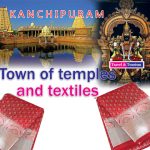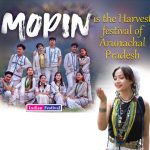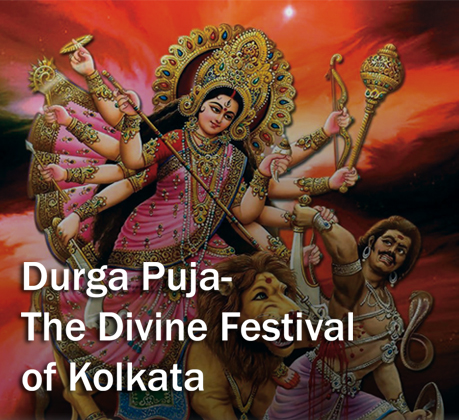Durga Puja, major festival of Hinduism, traditionally held for 10 days in the month of Ashvina (September-October), the seventh month of the Hindu calendar, and particularly celebrated in Bengal, Assam, and other eastern Indian states. As
with most festivals in India, the origins of Durga Puja (festival) lie in Hindu mythology. According to Hindu mythology, the goddess Durga came to earth on Mahalaya (one day before Navaratri) to kill Mahishasura. Mahalaya marks the end of
Pitru Paksha, the period dedicated to the ancestors, and the start of Devi Paksha, the period for worshipping the goddess. It is also said that the gods in the heavens stay awake throughout this period. The clay statues of Durga have to be
ready for the start of Devi Paksha; their eyes are painted in on the day of Mahalaya in a ritual called Chakshu Daan.
The story of Goddess Durga
The story of Goddess Durga has always captivated our minds and imaginations. The heroic way in which she defeats and kills Mahishasura, the buffalo demon, never fails to inspire us. It is believed that Mahishasura was the king of the asuras
and had the head of a buffalo. Even though he was an asura (demon), he was deeply devoted to Lord Brahma and performed years of difficult penance for him. Finally, Lord Brahma was impressed with the hardships he had gone through and was
ready to grant him a wish. Mahishasura, drunk with power and wanting to dominate the entire earth, oceans, skies and seas, demanded immortality. He desired that he should not die at the hands of either a man or an animal. Lord Brahma
immediately granted him his wish, but also told him that his death would occur at the hands of a woman.
However, Mahishasura was amused by this prediction as he believed himself to be too powerful to be killed by any woman. Drunk with power and motivated by his invincibility, he attacked Trilok (the three worlds – earth, heaven and hell). He
did not even spare Indralok, the abode of Lord Indra. Even though the gods waged a war against the buffalo demon, they were unable to defeat him because he had been blessed by Lord Brahma. Helpless and frightened, they decided to seek Lord
Vishnu’s help. After hearing out their problems and the grave threat facing them, he decided to create a female form. Since Lord Shiva is known as the god of destruction, all the three gods came together to create Goddess Durga, an avatar
of the ultimate Shakti.
According to the story, Mahishasura and Goddess Durga were engaged in a war for about fifteen days, during which he kept changing himself into different animals and assuming different forms. Finally, when he changed himself into a buffalo,
Goddess Durga stabbed him in the chest with her trident, while her lion dug its claws deep into his flesh. That was the end of the evil buffalo demon.
Religious importance of Durga Puja Festival
The religious significance of Durga Puja is that it is celebrated to mark the victory of Goddess Durga over the buffalo demon Mahisasura. It is symbolic of the victory of good over evil. During the course of the festival, the goddess is
worshipped in various forms like Durga, Lakshmi and Saraswati. She is a symbol of love, power, courage and kindness. She is also a mother who loves her children and a warrior goddess who defeats her enemies single handed, just as she killed
Mahishasura after engaging in a battle with him for 10 nights and 10 days. During the last five days, the mother is revered through various rituals and ceremonies, one of the most famous of which is the Ashtami Anjali.
Bodhon- bringing Durga to life:
On Shashti, the first day of the Durga Puja celebrations, a ceremony called Bodhon or Akaal Bodhan is held. It symbolically brings the Durga statue to life and marks the start of the festival. The word akaal is made up of a (“not”) and kaal
(“time”). Bodhan means “worship” or “invocation”. So Akaal Bodhan means to worship Durga outside the customary time. The usual time for worshipping Durga, as laid down by the Hindu sacred scriptures, is in the month of Chaitra (March-April)
and is called Basanti Durga Puja. But it is not much practiced and the September-October worship, called Sharadiya (autumn) Durga Puja is preferred. The reason for celebrating Navaratri in autumn is that in Hindu mythology, it was autumn
when Lord Rama prayed for Mother Durga’s blessing before the final battle against Ravana.
Boron- Farewell to Durga:
The festival ends on Dashami evening with the Boron (“welcome”) ceremony, a kind of farewell to Durga while praying to her to come back next year. Married women in bright red saris and their finest gold jewellery come, preceded by dhaak
drums and conch shell horns, to bid the goddess goodbye and beg her to come back next year. They light oil lamps to light up her face, smear vermilion on her forehead as a wish for a long married life, feed her sweetmeats and clean her face
with betel leaves. When the last goodbyes are said, the women play sindur khela, smearing vermilion on each others’ foreheads and cheeks; it is a gesture of solidarity and bonding among married women and helps to integrate newly married
women into their group.
Visarjan- Immersion in the water:
The celebrations end with Vijaya Dashami (“Tenth Day of Victory”), Visarjan when the deity is taken in procession and immersed in a river or other water body which, for the occasion, is considered the same as the holy water of the Ganges.
To the insistent beat of the percussion, the faithful dance along with the procession carrying dhunachi, earthenware lamps with coconut husk burning in them. They shout “Bolo Durga mai-ki jai!” (“Glory to Mother Durga!”) or “Asche Bochor
abar hobe!” (“It will begin again next year!”) and the statue of Durga, who just a few hours earlier was as splendid as only a goddess can be, humbly dissolves in the water. That custom is symbolic of the departure of the deity to her home
and to her husband, Shiva, in the Himalayas.

















Add Comment